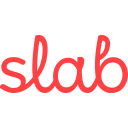Slite vs Confluence: Which collaboration tool is right for your team?
- 01Slite vs Confluence: overview
- 02What's the difference between Slite and Confluence?
- 03Slite pros and cons
- 04Confluence pros and cons
- 05Slite compared to Confluence
- 06Confluence compared to Slite
- 07Features comparison
- 08Slite vs Confluence: Which is the best for your business?
- 09Promotions on Collaboration software
- 10Alternatives to Slite & Confluence
Effective team collaboration is essential for the success of any organization. Fortunately, several collaboration tools are available to help manage projects and enhance productivity, with Slite and Confluence emerging as leading contenders.
In this comprehensive comparison, we'll explore the unique features and primary distinctions between Slite and Confluence. By delving into the Slite vs. Confluence debate, you'll gain valuable insights to help you make an informed decision and select the collaboration tool that aligns perfectly with your business requirements. So, let's dive into the details and find the ideal solution for your team.
Slite vs Confluence: overview
Slite and Confluence are two dominant players in the world of collaboration software, each offering a distinct set of features designed to enhance productivity and streamline communication across teams.
Slite is renowned for its user-friendly interface and cloud-based approach, enabling teams to collaborate and organize information efficiently. It provides a robust suite of tools for note-taking, document sharing, and team discussions, making it an excellent choice for small to medium-sized teams seeking simplicity and efficiency. Confluence, on the other hand, is recognized for its extensive capabilities and integration options. It offers a comprehensive array of collaboration features, including advanced project management and knowledge base creation, catering to both small teams and larger enterprises that require a more structured approach to documentation and collaboration.
In our Slite vs. Confluence comparison, we will explore the strengths and weaknesses of each platform, helping you make an informed decision when choosing the ideal collaboration software to meet your team's specific needs.
What's the difference between Slite and Confluence?
Slite and Confluence are two prominent collaboration tools designed to enhance productivity and streamline communication within teams. While both platforms offer similar functionalities, there are key differences that can guide your choice between the two.
One of the most notable distinctions is the user interface and overall user experience. Slite is celebrated for its clean, minimalist design, making it particularly user-friendly and easy to navigate. This simplicity allows team members to quickly create and organize notes, fostering seamless collaboration. Confluence, on the other hand, is known for its comprehensive feature set, which can offer more functionality but may come with a steeper learning curve for new users.
Scalability is another crucial factor to consider. Slite is well-suited for small to medium-sized teams looking for straightforward collaboration and knowledge-sharing solutions. Its cloud-based nature allows team members to access and edit documents from anywhere with an internet connection. Confluence, by contrast, is designed to cater to both small teams and large enterprises, providing advanced project management tools and extensive integration capabilities, making it ideal for organizations with more complex documentation needs.
Integration options also vary between the two platforms. Slite offers integrations with popular tools such as Slack and Trello, enhancing team workflows. However, Confluence boasts a broader range of integrations, especially with other Atlassian products, which can be advantageous for businesses that rely on a suite of integrated tools for project management and development.
Pricing models differ as well. Slite typically offers a straightforward subscription model based on team size and feature needs, allowing businesses to manage costs effectively. Confluence provides various pricing tiers, including free options for small teams, but additional features and integrations may incur extra costs, so it's important to evaluate your specific requirements and budget.
In terms of support and customer service, both Slite and Confluence offer resources such as online help centers and community forums. However, the availability and responsiveness of their support teams can vary, so it’s advisable to assess your support needs and read user reviews to make an informed decision.
Slite pros and cons
What are the advantages of Slite?
- User-friendly interface: Slite's clean and intuitive interface makes it easy for team members to create, organize, and collaborate on notes and documents without needing extensive training. This simplicity helps teams quickly adopt the platform and start collaborating efficiently.
- Real-time collaboration: Slite offers real-time editing and collaboration features, allowing multiple team members to work on the same document simultaneously. This feature enhances teamwork and ensures that everyone is on the same page.
- Powerful search functionality: The platform provides robust search capabilities, making it easy to find specific information or documents quickly. This helps teams save time and stay organized, especially when dealing with large volumes of notes and documents.
- Integration with popular tools: Slite integrates seamlessly with other popular tools like Slack and Trello, allowing teams to streamline their workflows and connect their existing software ecosystem. This enhances productivity and ensures smooth communication across platforms.
- Offline access: Slite offers offline access to notes and documents, enabling users to view and edit content without an internet connection. This feature is particularly useful for team members who need to work remotely or travel frequently.
What are the disadvantages of Slite?
- Limited advanced features: While Slite is excellent for basic note-taking and collaboration, it may lack some of the more advanced features and customization options offered by competitors like Confluence, making it less suitable for complex project management tasks.
- Storage limitations: Slite's free and lower-tier plans may have limitations on storage capacity, which can be restrictive for teams dealing with large amounts of data or extensive document archives.
- Limited formatting options: The platform's text formatting options might be more limited compared to other document editors, which can be a drawback for users who require extensive styling or custom formatting for their documents.
- Mobile app limitations: Some users may find that the mobile app does not offer the same level of functionality or ease of use as the desktop version, potentially hindering productivity for those who rely on mobile access.
- Dependency on internet connection: While Slite offers offline access, certain features and updates may still require an internet connection, which could pose challenges for teams with unreliable internet access or in locations with limited connectivity.
Compare Slite to other tools
Confluence pros and cons
What are the advantages of Confluence?
- Robust feature set: Confluence offers a comprehensive set of features for collaboration, documentation, and knowledge management. Its advanced capabilities, such as templates, macros, and page hierarchies, make it a powerful tool for teams needing to manage complex projects and extensive documentation.
- Seamless integration with Atlassian suite: Confluence integrates seamlessly with other Atlassian products like Jira, Bitbucket, and Trello. This integration allows teams to connect project management, version control, and documentation, creating a cohesive workflow across different platforms.
- Customizable templates: The platform provides a wide range of customizable templates for various use cases, including meeting notes, project plans, and product requirements. This feature helps teams standardize documentation and save time when creating new pages.
- Comprehensive permissions and security: Confluence offers detailed permissions settings, allowing administrators to control access at the page, space, or user level. This ensures sensitive information is secure and only accessible to authorized team members.
- Scalability for large teams: Confluence is designed to support large teams and organizations, making it an excellent choice for enterprises with complex documentation needs and multiple departments. Its ability to handle extensive content and user volumes ensures it can grow with your organization.
What are the disadvantages of Confluence?
- Steep learning curve: Confluence's extensive features and customization options can result in a steep learning curve for new users. Training and time are often needed to fully leverage its capabilities, which might slow down initial adoption.
- User interface complexity: The interface can be overwhelming for users who are accustomed to simpler collaboration tools. Navigating the platform and finding specific features may require additional effort, especially for those new to Confluence.
- Cost: Confluence's pricing can be relatively high compared to simpler collaboration tools, especially for larger teams or enterprises that require premium features. This can be a barrier for smaller organizations with limited budgets.
- Performance issues with large pages: Users may experience performance issues when working with very large pages or complex documents, such as slow loading times and lag during editing. This can impact productivity, particularly for teams that handle extensive documentation.
- Limited offline access: Confluence's offline capabilities are limited, which means users need an internet connection to access and edit content. This can be a drawback for team members who need to work in environments with unreliable connectivity.
Compare Confluence to other tools
Slite compared to Confluence
Slite and Confluence are both popular collaboration tools, but they cater to different needs and team sizes. Slite is known for its user-friendly interface, making it ideal for small to medium-sized teams that prioritize ease of use and quick note-taking. It offers basic collaboration features and integrates well with tools like Slack.
In contrast, Confluence is a robust platform designed for larger enterprises with complex documentation needs. It offers extensive features for project management and integrates seamlessly with other Atlassian products. While Slite emphasizes simplicity and accessibility, Confluence provides comprehensive capabilities for teams requiring more structured documentation and project management.
Is Slite better than Confluence?
Determining whether Slite is better than Confluence depends on your team's specific needs and priorities. Slite excels in simplicity and ease of use, making it an excellent choice for small to medium-sized teams that require straightforward collaboration and quick access to information. Its minimalist design and intuitive features enable efficient note-taking and basic document sharing without overwhelming users.
On the other hand, Confluence is better suited for larger organizations that need a more comprehensive solution for managing complex documentation and project workflows. It provides advanced customization, integration options, and features designed to support detailed project management and extensive collaboration across various departments.
What is Slite best used for?
Slite is best used for team collaboration and knowledge management, especially for small to medium-sized teams seeking a straightforward and user-friendly platform. It excels in organizing team notes, documents, and discussions in a centralized location, making it easy to access and update information.
Slite’s intuitive interface allows teams to collaborate in real-time, facilitating seamless communication and coordination. Its integration with tools like Slack enhances productivity by streamlining workflows and keeping all team communications in one place. Slite is particularly effective for teams that need a simple yet efficient solution for managing projects, sharing ideas, and maintaining a knowledge base.
Can Slite replace Confluence?
Slite can replace Confluence for teams that require a simpler and more intuitive platform for note-taking and basic collaboration. Slite is well-suited for small to medium-sized teams looking for an easy-to-use tool to manage notes, documents, and team discussions.
However, it may not fully replace Confluence for larger enterprises or teams needing advanced project management features and extensive integrations with other tools. Confluence offers a more robust set of capabilities, including advanced customization options and integration with the Atlassian suite, which are essential for complex documentation needs.
Is Slite cheaper than Confluence?
Slite is generally cheaper than Confluence, especially for smaller teams and startups. Slite offers a straightforward pricing model with affordable plans that cater to small to medium-sized teams, providing essential features for collaboration and note-taking at a lower cost. Its pricing structure is designed to be budget-friendly, making it accessible to teams with limited financial resources.
In contrast, Confluence, which is geared towards larger organizations with more complex documentation and project management needs, can be more expensive, especially when premium features and integrations with the broader Atlassian ecosystem are required. Therefore, Slite’s pricing plans offer a cost-effective alternative for simpler use cases.
Is there a better Collaboration software than Slite?
When evaluating collaboration tools, it's important to consider whether there's a better fit than Slite for your team's specific needs.
Notable alternatives to Slite include Confluence, Notion, Microsoft OneNote, Evernote, and Google Workspace. Choosing the right collaboration software depends on factors such as team size, budget constraints, required features, and industry-specific needs. While Slite is praised for its user-friendly interface and simplicity, other platforms might offer advantages like more robust project management capabilities, extensive integration options, or specialized features that better align with your collaboration goals.
Confluence compared to Slite
Confluence and Slite are both collaboration tools, but they cater to different audiences. Confluence is ideal for larger teams and enterprises needing robust documentation and project management capabilities. It offers advanced features like customizable templates, integration with the Atlassian suite, and detailed permission controls, making it suitable for complex project environments.
Slite, on the other hand, is better suited for small to medium-sized teams looking for simplicity and ease of use. It focuses on straightforward note-taking and collaboration with a clean, intuitive interface. While Confluence provides comprehensive solutions for detailed project management, Slite emphasizes quick, accessible team communication.
Is Confluence better than Slite?
Whether Confluence is better than Slite depends on your organization's specific needs and the complexity of your projects. Confluence is better suited for larger teams and enterprises that require advanced project management and documentation features. Its extensive integration with Atlassian products, detailed permission settings, and customizable templates make it ideal for managing complex workflows and ensuring secure, organized collaboration.
However, if your team values simplicity and speed in communication, Slite might be a better choice. Slite offers a clean interface and straightforward collaboration tools, making it ideal for smaller teams that need quick, effective communication without the need for extensive customization.
What is Confluence best used for?
Confluence is best used for comprehensive documentation and project management within large teams and organizations. It excels in creating and organizing complex knowledge bases, making it ideal for managing extensive documentation, team collaboration, and internal communication.
With its robust set of features, including customizable templates, macros, and seamless integration with other Atlassian products like Jira, Confluence is perfect for teams that need to coordinate on detailed projects and track progress efficiently. It is particularly useful for software development teams, knowledge management, and any environment where structured content creation and collaboration are essential to maintaining productivity and organizational transparency.
Can Confluence replace Slite?
Confluence can replace Slite for teams that require more advanced documentation and project management capabilities. While Slite is ideal for small to medium-sized teams focusing on simple note-taking and collaboration, Confluence offers a more comprehensive feature set that supports complex documentation needs.
With its customizable templates, integration with the Atlassian suite, and detailed permission settings, Confluence is well-suited for larger organizations seeking a structured approach to managing information and team collaboration. However, for teams prioritizing ease of use and quick setup, Slite might still be preferable.
Is Confluence cheaper than Slite?
Confluence’s pricing is generally more expensive than Slite, especially when considering its extensive features designed for larger organizations. Confluence offers a range of pricing tiers that cater to different team sizes and feature needs, but its costs can increase significantly with advanced functionalities and integrations within the Atlassian ecosystem.
This makes it a better fit for enterprises with complex documentation and project management requirements. In contrast, Slite offers a more straightforward pricing model, making it more affordable for small to medium-sized teams seeking basic collaboration and note-taking features.
Is there a better Collaboration software than Confluence?
When exploring alternatives to Confluence, it's essential to assess whether there is a software solution better suited to your team's collaboration and documentation needs.
Notable competitors in the collaboration software space include Slite, Microsoft SharePoint, Slab, Asana, and Monday.com. Selecting the right collaboration tool depends on factors such as your team's size, budget constraints, required features, and industry-specific requirements. While Confluence offers extensive documentation and project management capabilities, other platforms may provide more intuitive interfaces, greater flexibility in customization, or specialized features tailored to your collaboration goals.
Features comparison
Both Slite and Confluence Provide Exceptional Search Capabilities
Both Slite and Confluence offer advanced search options designed to improve time efficiency and streamline workflows. Slite's generative AI-powered query system delivers quick and accurate results from your knowledge base, enabling users to find specific documents, notes, or information rapidly without wading through unrelated content. This is particularly useful for teams managing large volumes of information that need immediate access to precise data.
Similarly, Confluence allows you to search across pages, attachments, and comments, providing a comprehensive search experience that covers all aspects of your project documentation and collaboration. Confluence's search functionality is enhanced by filters and advanced queries, allowing users to pinpoint information even within complex, multi-layered projects. Both systems save valuable time by making information retrieval a breeze, ensuring that teams can focus on their core tasks rather than hunting for documents. These search capabilities make Slite and Confluence indispensable tools for efficient knowledge management.
Confluence Outperforms Slite in Project and Risk Management
While both tools aid in managing a business or project, Confluence presents a more comprehensive approach with its project and risk management features. Confluence allows for detailed task allocation, enabling team leaders to assign tasks with specific deadlines and dependencies, which helps streamline workflows and ensure accountability. Its progress tracking capabilities provide visibility into project status, facilitating timely adjustments and proactive management.
Moreover, Confluence's risk management features enable teams to identify potential risks early, implement mitigation strategies, and track their impact on project timelines and outcomes. These components are not explicitly present in Slite, which focuses more on note-taking and collaboration rather than integrated project management. Confluence's robust functionality ensures that projects are well-coordinated, risks are mitigated, and teams are aligned, making it an ideal choice for organizations needing structured project oversight and strategic risk management.
Slite Leads Over Confluence in Ease of Use
When comparing Slite and Confluence, the most noticeable difference comes in their ease of use, with Slite taking the lead due to its intuitive user interface and minimal learning curve. Slite is designed to feel as natural as writing on a notepad, making navigation straightforward and incredibly simple. This is especially beneficial for startups and small teams who need to focus on business growth rather than spending valuable time learning complicated software. In contrast,
Confluence, while powerful, offers a more complex interface with a steeper learning curve, requiring users to invest more time to fully utilize its advanced features and integrations. Slite's simplicity allows teams to quickly adopt and integrate the tool into their workflows without extensive training or onboarding, making it an ideal choice for teams that prioritize ease and efficiency in their collaboration tools.
Confluence Steps Ahead of Slite in Integration Capabilities
In terms of integrations with other tools, Confluence steps ahead of Slite, offering superior connectivity and flexibility. Developed by Atlassian, Confluence benefits from seamless integration with a wide range of other Atlassian products such as Jira for project management, Trello for task tracking, and Bitbucket for version control, making it an ideal choice for software development teams.
Furthermore, Confluence's robust API allows integration with hundreds of other popular third-party tools across various software categories, including Slack for communication, Google Drive for file storage, and Salesforce for customer relationship management. These integrations enable teams to create a unified ecosystem that enhances productivity and streamlines workflows, providing a comprehensive solution for organizations with diverse software needs. In contrast, Slite offers more limited integration options, primarily focusing on basic collaboration and note-taking, which may not fully support the complex requirements of larger enterprises.
Slite Excels Over Confluence in Streamlined Content Creation
Slite's intuitive editor is designed to blend seamlessly with your workflow, offering a swift and user-friendly interface for creating and managing content. This makes it particularly effective for teams that value efficiency and simplicity in their collaboration tools.
Unlike Confluence's customization features, which emphasize changing aesthetics to align with brand colors and logos, Slite's intuitive editor places more importance on substance over style. It allows users to focus on effective content development without the distraction of extensive formatting options. Slite supports Markdown for quick formatting and integrates tools like Slack and GitHub, allowing teams to concentrate more on their work rather than navigating complex interfaces. This unobtrusive design helps streamline workflows, making it an ideal choice for teams that prioritize straightforward, efficient content creation over elaborate customization options.
Confluence Outshines Slite in Centralized Knowledge Management
While both applications offer a centralized knowledge base, Confluence shines brighter in this department with its comprehensive capabilities. In Confluence, you can create and manage all your documents, procedures, tutorials, and best practices in one place, allowing for robust organization and seamless collaboration. Its advanced search functionality makes accessing, updating, and sharing information in real-time effortless, enabling teams to maintain up-to-date and easily navigable knowledge repositories.
Confluence also supports integrations with apps like Jira for linking documentation with project management tasks. Though Slite also offers a similar feature, its functionality is limited to monitoring what teams are reading or searching for, lacking the depth and interactivity of Confluence's more dynamic system. Confluence's ability to facilitate detailed documentation workflows makes it a preferred choice for larger organizations requiring extensive documentation and knowledge sharing.
Slite's Doc Verification Excels Over Confluence’s Feedback Management
Slite's Doc Verification feature ensures that your team is always working with the latest, most accurate information by allowing documents to be marked as verified with specific validity periods. This eliminates uncertainties and fosters confidence, as team members can trust that they are referencing up-to-date information. This is particularly beneficial for teams handling critical data, such as policy documents or technical guidelines, where accuracy is paramount.
In comparison, Confluence’s feedback management system focuses on gathering feedback for suggestions, bugs, and improvements, facilitating user engagement and iterative enhancements. Both systems provide methods to ensure data reliability, but Slite's Doc Verification goes a step further by ensuring data authenticity through structured validation processes, offering a more robust solution for maintaining data integrity. This makes Slite especially advantageous for organizations where information accuracy is critical to operations.
Subscribe to our newsletters.
No FOMO here. Stay up-to-date on all the latest deals and news with our monthly newsletter straight to your inbox like 126,000+ entrepreneurs (+ Get 10% off on on our Premium Membership!)
Slite vs Confluence: Which is the best for your business?
Slite is the best tool for you if:
- Your team values simplicity and speed in collaboration, with an emphasis on a user-friendly interface that facilitates quick note-taking and document sharing without a steep learning curve.
- You require an intuitive platform that supports real-time editing and communication, enabling team members to collaborate seamlessly and stay aligned on projects regardless of their location or time zone.
- Integration with popular tools like Slack and Trello is crucial for your workflow, allowing you to enhance productivity by connecting your existing software ecosystem with ease and efficiency.
- Your organization prefers a budget-friendly solution that offers essential features without the need for extensive customization, making it suitable for startups and small to medium-sized teams.
- You need a reliable tool for maintaining a centralized knowledge base, where your team can easily access, update, and verify information, ensuring everyone works with the latest data.
Confluence is the best tool for you if:
- You manage complex projects that require robust documentation, task management, and advanced features like detailed permissions and workflows to ensure thorough oversight and collaboration across large teams or departments.
- Your organization relies on Atlassian products like Jira and Bitbucket, as Confluence seamlessly integrates with these tools, creating a unified platform that enhances productivity and project visibility.
- You need customizable templates and macros to standardize documentation processes, making it easier to create structured, consistent content that supports efficient project execution and knowledge management.
- Your team requires comprehensive search capabilities that allow users to quickly find specific information within a vast knowledge base, improving efficiency and enabling informed decision-making.
- You seek a scalable solution that can grow with your organization, providing advanced functionalities and integrations necessary for managing large-scale projects and extensive documentation needs.
Alternatives to Slite & Confluence
Promotions on Collaboration software
Start saving on the best SaaS with Secret.
Secret has already helped tens of thousands of startups save millions on the best SaaS like Slite, Confluence & many more. Join Secret now to buy software the smart way.










